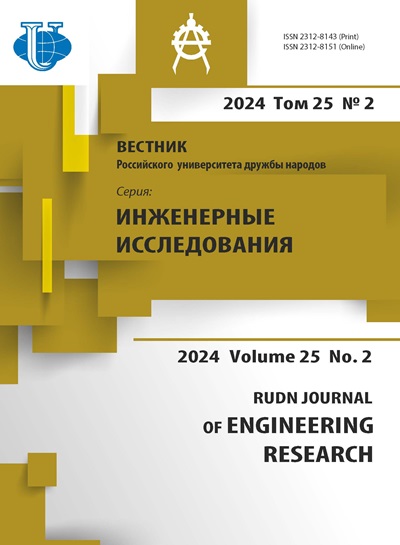Hydrological safety and risk assessment of hydraulic structures
- Authors: Strygina M.A1, Gritsuk I.I2,1,3
-
Affiliations:
- Institute of Water Problems Russian Academy of Sciences (IWP RAS)
- Peoples’ Friendship University of Russia (RUDN University)
- Moscow Automobile and Road Construction State Technical University (MADI)
- Issue: Vol 19, No 3 (2018)
- Pages: 317-324
- Section: Architecture and civil engineering
- URL: https://journals.rudn.ru/engineering-researches/article/view/19253
- DOI: https://doi.org/10.22363/2312-8143-2018-19-3-317-324
Cite item
Full Text
Abstract
Hydraulic structures (HS) are engineering structures of major hazard, intended for use of water resources and prevention of negative impact of water and pollutants, operating tens or hundreds of years and have proven to be generally stable structures. Hydrological safety is understood as stability of hydraulic structures during its operation against extreme hydrological impacts of natural and maninduced nature. Most of the HS are built based on modern projects in accordance with current regulatory documents, but the probability of accidents in hydroelectric facilities tends to grow, especially after 30-40 years of operation. Most severe emergency situations (ES) occur when hydraulic structures, such as dams of large reservoirs, let over-estimated discharge through, especially if it is associated with inept exploitation. This is evidenced by the materials of the International Commission on Large Dams, according to which about 3000 accidents of different degrees occur in hydropower stations worldwide every year. Most of the accidents associated with breaking waterfront of dam could be avoided by monitoring the technical condition of HS and ensuring necessary training of operating personnel.
About the authors
Maria A Strygina
Institute of Water Problems Russian Academy of Sciences (IWP RAS)
Author for correspondence.
Email: maria.strygina@gmail.com
Postgraduate student of the laboratory «Channel flow dynamics and ice thermal conditions», Institute of Water Problems Russian Academy of Sciences (IWP RAS). Research interests: hydraulics, engineering hydrology, hydrotechnical construction
3, Gubkina str., Moscow, 119333, Russian FederationIlya I Gritsuk
Peoples’ Friendship University of Russia (RUDN University); Institute of Water Problems Russian Academy of Sciences (IWP RAS); Moscow Automobile and Road Construction State Technical University (MADI)
Email: gritsuk_ii@pfur.ru
Candidate of Technical Sciences, Associate professor of the Department of Construction, Engineering Academy, Peoples’ Friendship University of Russia (RUDN University). Senior researcher of the laboratory “Channel flow dynamics and ice thermal conditions”, Institute of Water Problems Russian Academy of Sciences (IWP RAS). Associate professor of the Department of Hydraulics, Moscow Automobile and Road Construction State Technical University (MADI). Research interests: hydraulics, engineering hydrology, hydrotechnical construction
6, Miklukho-Maklaya str., Moscow, 117198, Russian Federation; 3, Gubkina str., Moscow, 119333, Russian Federation; 64, Leningradsky prospect, Moscow, 125319, Russian FederationReferences
- Lyapichev Yu.P. Gidrologicheskaya i tekhnicheskaya bezopasnost’ gidrosooruzhenii: uchebnoe posobie [Hydrological and technical safety of hydraulic structures: a textbook]. Moscow: PFUR Publ., 2008. 222 p. (in Russ.)
- Malik L.K. Faktory riska povrezhdeniya gidrotekhnicheskikh sooruzhenii. Problemy bezopasnosti [Risk factors of damage in hydraulic structures. Security issues]. Moscow: Nauka Publ., 2005. 354 p. (in Russ.)
- Lyapichev Yu.P., Ponomarev N.K. Gidrotekhnicheskie sooruzheniya: uchebnoe posobie [Hydraulic structures: a textbook]. Moscow: PFUR Publ., 2008. 456 p. (in Russ.)
- Veksler A.B., Ivashintsov D.A., Stefanishin D.V. Nadezhnost’, sotsial’naya i ekologicheskaya bezopasnost’ gidrotekhnicheskikh ob”ektov: otsenka riska i prinyatie reshenii [Reliability, social and ecological safety of hydraulic facilities: risk assessment and decision-making]. Sankt-Peterburg: OJSC «VNIIG im B.Ye. Vedeneeva». 2002. 592 p. (in Russ.)
















